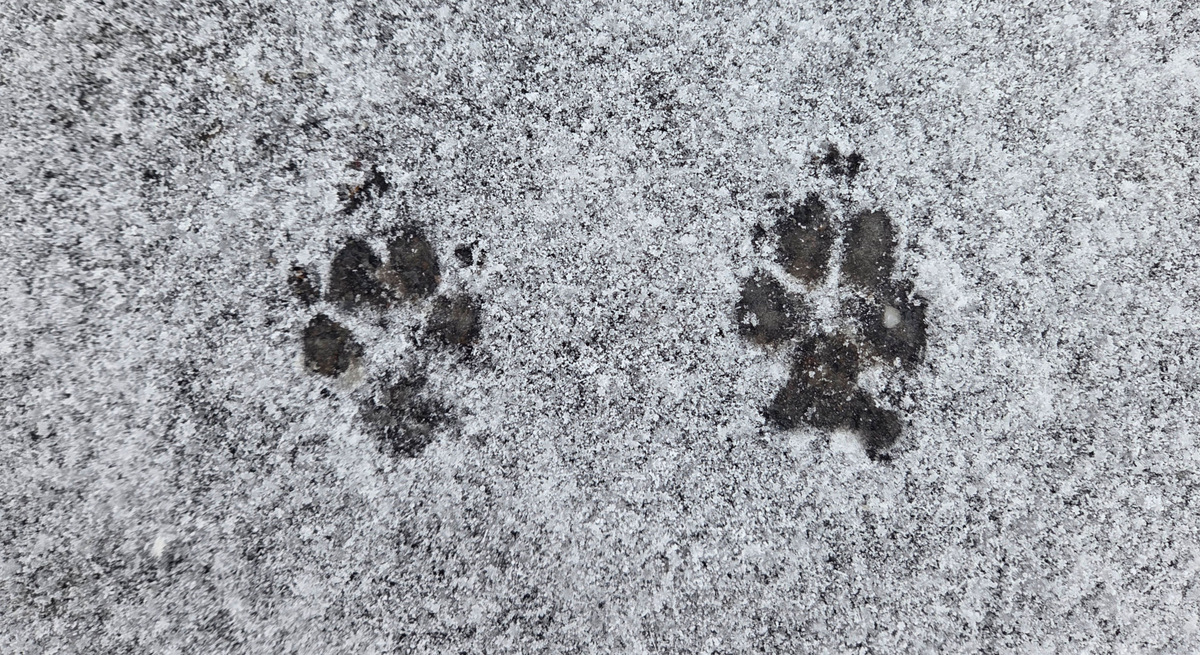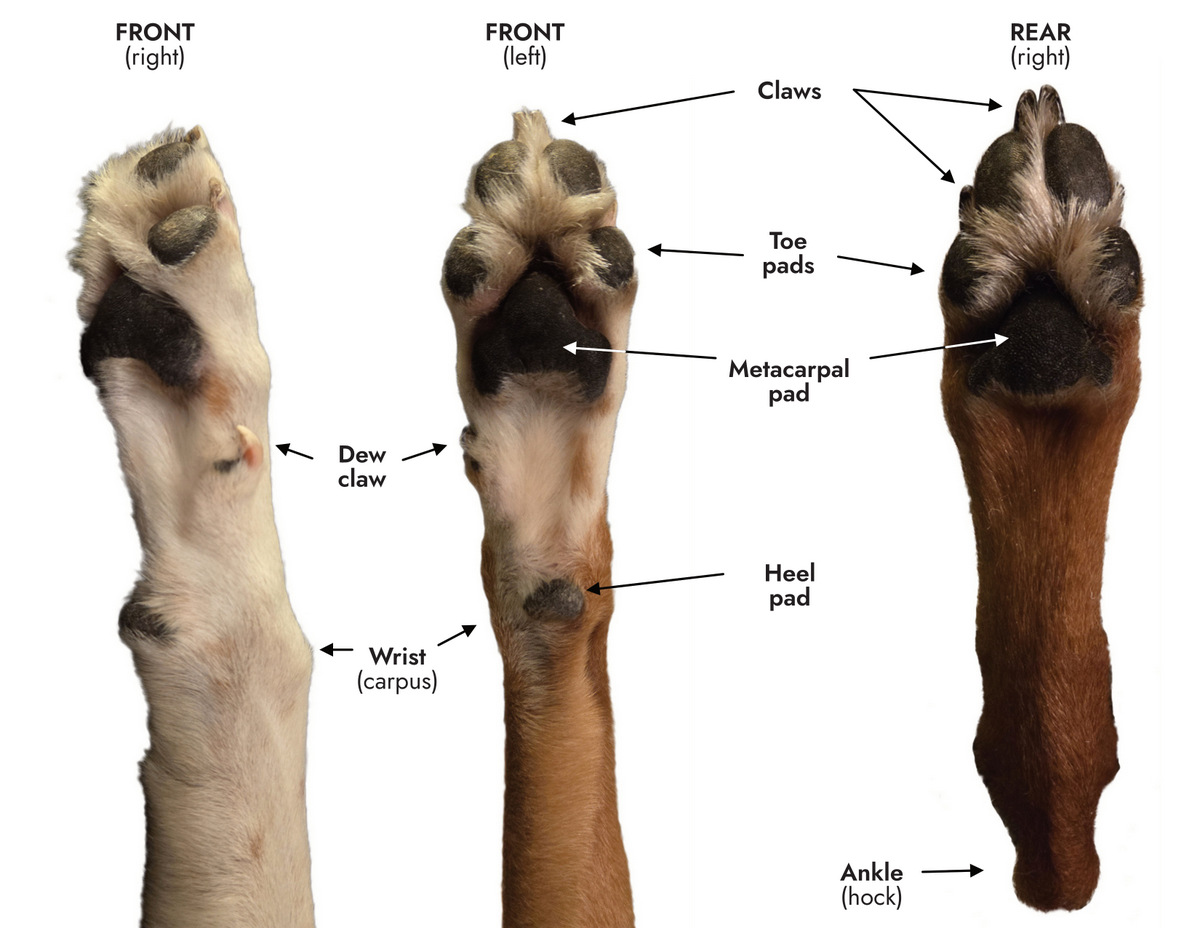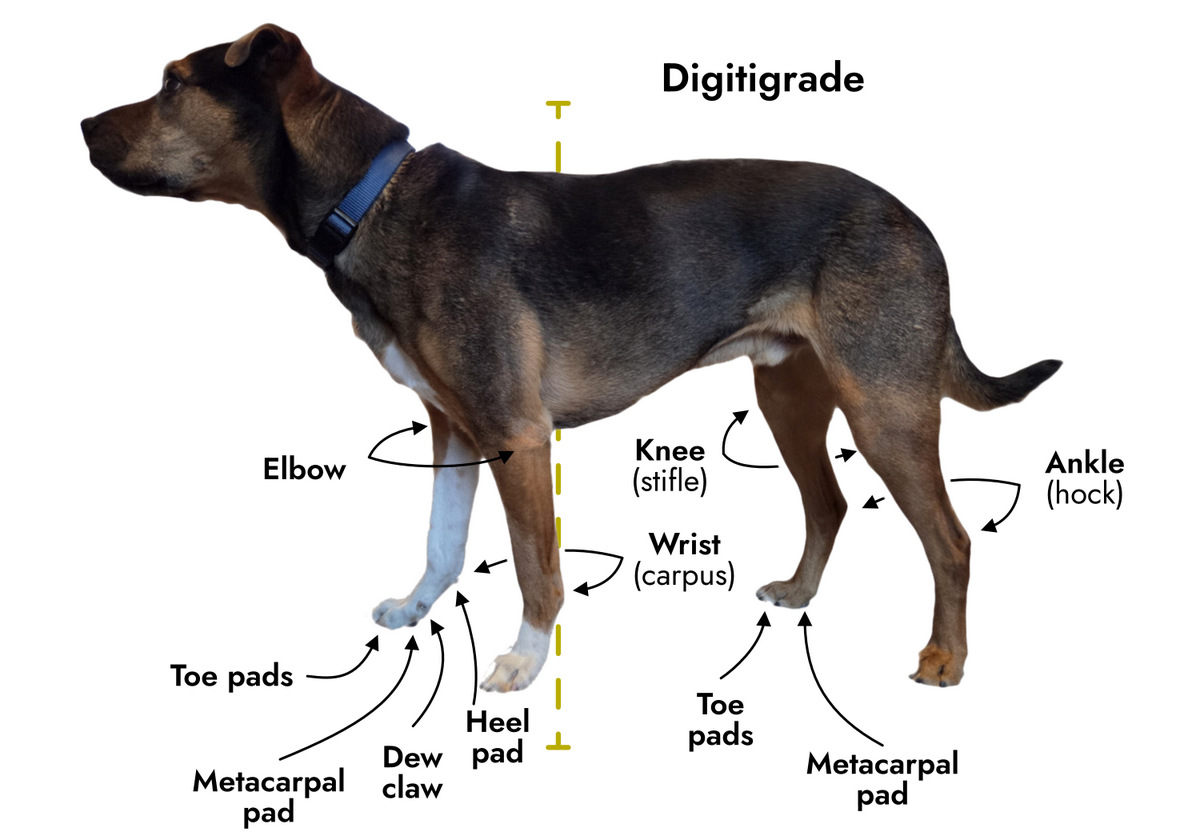A guide to tracks
A track is a single impression left behind by one of an animal’s feet. It is one in a long string of impressions that ultimately weave a trail to the animal itself. While we don’t always get those perfect prints in the mud with claws and perfectly rendered digits, we can occasionally discern enough detail to identify an animal based on the track alone. In this section you’ll learn about the key features to look for on a track and some of the key features of the tracks of common Vermont mammals.
Connecting shape of tracks to shape of feet
Take a minute to look at the two tracks in the image below. Same animal, but one a hind foot, the other a front. Some simple questions can help us draw out the subtle differences between the two tracks and guide us along a path towards both identification and interpretation:
- What’s the overall shape of the track (round, oval, triangular)?
- Is the track symmetrical?
- Are the front/rear tracks the same size?
- Are the shapes of the metacarpal (palm) and heel pads the same (note: these tracks don’t have heel pads)?
- Is the negative space (the space between the toes and metacarpal pad) the same shape/thickness?
- Do the claws show? If so, how close are they to the toes?
- How many toes on the front/rear feet?

These questions can be significantly easier to answer when you add color to the different features. I also included the animal’s actual feet to show how this translates from foot to track (this is a domestic dog). Below are the feet once again, but this time with labels of the different features.


Foot-body connection
Tracks, of course, are made by feet, which, of course, are attached to an animal’s body. We can then, of course, use information from the track to infer details about how the animal stands/moves. We can also use information from watching an animal stand/move to understand why its tracks look the way they do.
Take a lot at Boots in the image above and try to imagine how his posture influences the way he will leave tracks. We can see that he stands up on his toes, or digits, a posture called digitigrade. Here, the ankles and wrists of the animal are up off the ground and so the size of the track is relatively smaller than if the whole foot, heel and all, came in contact with the ground (called plantigrade). Look at the same image with labels that show the different joints on the leg.

How to look at tracks
A track is an animal’s signature, a mark etched in the earth by its foot. While each track is unique in its own way, there are patterns across sex, species, and family lines that greatly simplify the identification process. As with a signature, by looking at a track we can discern much about the personality of the individual that left it behind. The first question that usually comes up is what species made this track. As we get better at tracking, our questions get deeper and deeper. Was this male or female? Young or old? Tired or well-rested? And so on.
Species ID:
There are a few main questions you can ask when looking at a track (for more on looking at series of tracks and gait patterns, go here).
- Shape
- Are the front and rear tracks the same shape?
- What is the overall shape (e.g. oval, round, wedge shaped) of the front and rear foot tracks?
- Size
- What is the size of the track (both width and length measured from the tip of the claws to the back of the pads)?
- Are the hind feet larger/smaller than the front feet?
- Claws and toes
- How many toes on the front/rear foot?
- Does the animal show claws in the track?
- If so, what is the spacing between the claws and the feet
- Is the animal plantigrade (walks on the soles of its feet) or digitigrade (walks on its toes)?
Once we know more about the size and shape of the tracks and its toes/claws we can pretty easily ID down to family and with some more refined measurements get down to species.
Quick ID Key to Family for Tracks
- Track with 5 toes in rear 5 toes in front
- Front + back roughly same size & shape
- Mustelidae (weasels, fisher, otters)
- Mephitidae (skunks)
- Didelphidae (possums)
- Insectivora (order containing shrews + moles),
- Front + back different size & shape
- Ursidae (bear)
- Procyonidae (raccoons)
- Leporidae (rabbits)
- Front + back roughly same size & shape
- Track with 5 toes in rear, 4 in front
- Rodentia (order containing squirrels, beavers, mice, rats, muskrats)
- Track with 4 toes in rear, 4 in front
- Tracks round: Felidae (cats)
- Tracks oval: Canidae (dogs)
- Track with 2 toes in rear and front
- Cervidae (deer, moose)
